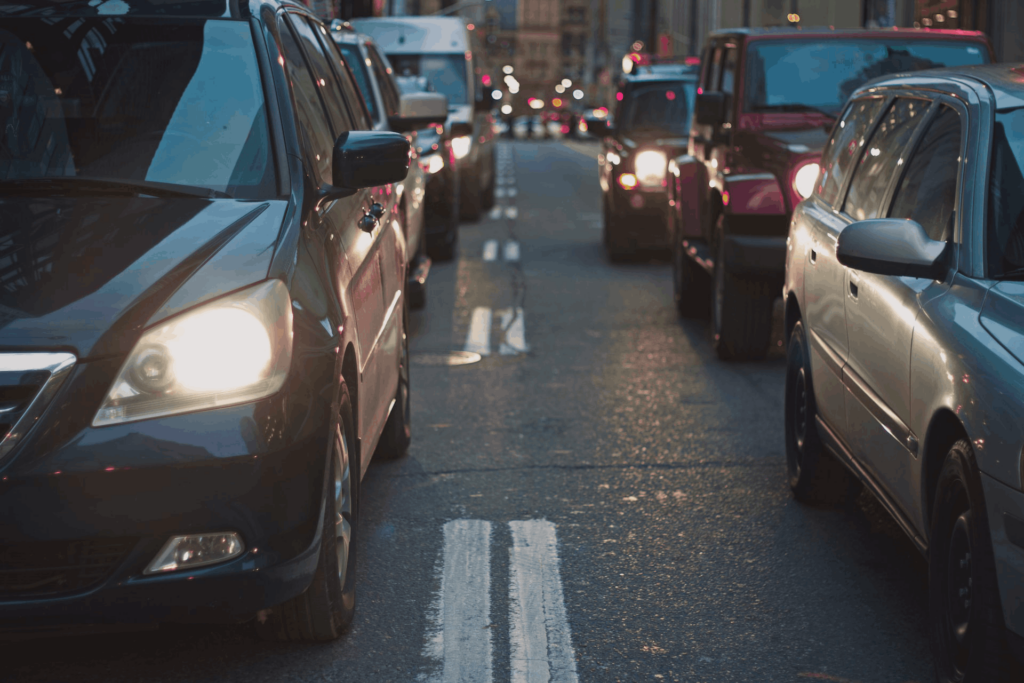Multiple vehicle accidents happen when more than one motorcycle, truck, or car is involved in a collision. These crashes are more likely to happen on highways since hundreds of motor vehicles run side-by-side at high speed. In this scenario, it’s common for other drivers to run into an accident and collide with other vehicles in front of them.
These accidents are more prevalent when snow, rain, or fog reduces road visibility. In these road conditions, drivers must be more alert and cautious. However, most must be aware of what’s in front of them. The NHTSA fact sheet revealed in 2021 that multi-vehicle crash casualties increased by 16% from the previous year.
In February 2023, two adults and a toddler sustained injuries in a multi-vehicle crash in Oxford Circle, Philadelphia. Fortunately, the victims survived. Not everyone is as lucky as these people. In another accident, a 56-year-old woman succumbed to her injuries following a multi-vehicle crash on Highway 9, Norman City, Oklahoma.
These multi-vehicle accidents are preventable. There would be fewer casualties if motorists observed road safety rules and remained diligent while traversing roads and highways. Diligence starts with knowing the nature of multi-vehicle accidents, the causes, and the liabilities for reckless behavior.
What are the common causes of multi-vehicle accidents?
A multi-vehicle collision can happen due to a variety of factors. However, the following are the most common:
Side swiping
A sideswipe accident is when two vehicles traveling in the same direction come into contact. These accidents usually occur when two lanes merge, such as entering an interstate highway. The following are common causes of sideswipes:
- Inattentive drivers fail to check their blind spots while changing lanes
- Distracted drivers using their phones or conversing with passengers while driving
- Impaired drivers due to lack of sleep, drugs, or alcohol
- Sudden swerving due to an obstacle or animal on the road
Most cars offer protection against rear-end and head-on clashes. This protection is why victims of sideswipe accidents usually suffer severe injuries. The front and rear portions of the vehicle have bumpers to dissipate crash impact, but the sides are relatively unprotected.
Side-impact collisions
Side-impact collisions, or T-bone accidents, happen when a car gets hit on the side at a 90-degree angle. Since a car’s sides have less reinforcement than the front or back end, a T-bone accident often leads to severe injuries. The
Rear-end collisions
Getting struck from behind may be less catastrophic than side-impact or head-on collisions, but you can still sustain injuries. The front vehicle’s distance from the point of impact and the lower vehicle speed make this accident less lethal.
Known as rear-end collisions, these accidents usually happen on busy highways, stop signs, and areas with traffic lights. The National Safety Council (NSC) shared that rear-end collisions accounted for 3,000 deaths in 2020.
It’s a common belief that the rear driver is often at-fault for these collisions. However, this is only sometimes the case. The rear driver may refute the presumption by showing that another driver was negligent.
Head-on collisions
Also known as a frontal crash, a head-on collision happens when vehicles running in opposite directions collide. Any crash may result in injury, but head-on wrecks are highly likely to result in serious injury and fatality to passengers of either vehicle.
According to the NHTSA report, there were 35,766 fatal collisions in the US in 2020. Unfortunately, 10.2% or 3,631 of these cases were due to head-on collisions.
What are your rights after a multi-vehicle accident?
You must know your rights if you or one of your family members get involved in a multi-vehicle accident. Determining liability can be tricky, and other drivers may try to put all the blame on you. You can protect yourself and claim compensation for all your injuries by knowing your rights.
Right to receive medical attention
You’re entitled to medical attention whether you’re the victim, the primarily liable driver, or someone partially guilty of negligence. Right after the accident, the best thing to do is check yourself, move out of harm’s way, and check on other people involved.
Anyone who got hurt needs to seek medical attention first. Determining liability can wait until everyone involved is already free from bodily harm. You can use your medical records later to prove the extent of your injuries and the amount of economic damages you should claim.
Right to file a claim
Any injured party to a multiple-vehicle accident has the right to file a claim from their insurer or the insurer of the party causing the crash. However, this right doesn’t entitle the claimant to ask for outrageous claims. They must adhere to the provisions of their
Right to obtain information
After an accident, you can now move to determine fault and liability for your injuries. You’ll need evidence to prove that somebody’s negligence caused your injuries. Aside from your medical report, you would also need the following information:
- Proof of lost wages
- Hospital bill
- Police report
- Witness statements
- Video recordings or CCTV footage of the accident
Right to consult an attorney
The victim and the alleged at-fault party in chain reaction accidents are entitled to legal representation. Your car accident attorney will act on your behalf and protect your rights as you seek legal compensation. They can negotiate a settlement with the at-fault party,
Right to take legal action
When you can’t agree with the insurer or other party, you can file a case for damages in court. During the litigation, the plaintiff can state their case and prove their cause of action. On the other hand, the defendant has the right to face the accuser. They can use that opportunity to refute any evidence alleging negligence or malice in their acts.
How do you determine liability in a multi-vehicle accident?


Due to the numerous factors contributing to a pile-up car accident, more than one driver may be accountable. Since this is the case, establishing fault can be difficult.
No-fault versus at-fault states
One of the first considerations to make a claim is attributing fault in a multi-car crash. The determination significantly impacts compensation as a no-fault or at-fault state operates under different rules.
In an at-fault state, the driver who caused the injury must pay damages. On the other hand, in no-fault states like Florida, Delaware, and Michigan, drivers must purchase Personal Injury Protection (PIP) auto insurance.
All parties should direct their claims to their respective insurers in an accident. These insurers will pay the injury-related costs regardless of who is the responsible party.
PIP covers the insured’s medical expenses and a portion of lost wages up to the policy’s limits. The at-fault driver is typically responsible for property damage expenses. They’re not liable for minor injury-related losses.
In no-fault states, injury victims typically do not have recourse to civil action. Some no-fault states may allow those with severe injuries to sue the at-fault driver, but only if the accident meets certain conditions.
In an at-fault state, the liable driver’s
Drivers sharing fault in a no-fault state
Suppose both drivers share fault for a collision in a no-fault state. In that case, the rules regarding victim compensation differ depending on the state. Three legal doctrines could apply:
This legal rule applies in only a few states. The driver can’t receive compensation from the other party if they are partially responsible for the accident. This restriction means someone only 1% responsible cannot recover damages from the driver, who was 99% at fault.
In states with this legal rule, victims can pursue damages even if they were mostly to blame for the accident. However, the court will reduce their compensation by their percentage of fault. For example, a driver who was 75% responsible will only get 25% of the total award or settlement
- Modified comparative negligence
These states allow drivers partly responsible for their own injuries to recover compensation for a portion of damages. However, they can only do so if they are less than 50% or 51% responsible, depending on the state.
Cases in which both parties are at fault can be particularly complex, so seeking appropriate legal assistance is crucial.
Did you know?
Known as chain reaction crashes or pile-ups, multi-vehicle car accidents can be deadly. Single- vehicle accidents can be just as lethal. However, accidents involving multiple vehicles typically result in more damage.
Get Help Recovering Damages for Your Injuries
Multi-vehicle accidents often have a multiplier effect on the extent of injuries to involved parties. Additionally, determining liability can be challenging without the help of an experienced personal injury lawyer.
Suppose you or a family member sustained serious injuries or worse in a pile-up accident that was not your fault. Holding the liable parties accountable can help you recover from your losses.
You can learn more about this by checking out The Personal Injury Center. The center’s comprehensive collection of legal resources can point you in the right direction. You can also avail of our free consultation to access our car accident lawyer database.
Book a free case evaluation now.
Injuries in a chain-reaction pile-up accident can range from mild headaches to more severe outcomes. Get compensation by consulting a personal injury lawyer now.
FAQs on Multi-Vehicle Accidents
What is restitution, and who should pay it in multi-vehicle collision cases?
Restitution is typically compensation to a victim of a crime for their losses as part of their sentence. One example is paying back the money to the victim in embezzlement cases. However, in civil cases, it is a remedy for the defendant’s unjust gain from unlawful conduct rather than the victim’s losses.
The court may order restitution for injured parties in a multi-vehicle collision in a criminal context as a civil liability. An example may be a crash resulting from a car chase for a stolen vehicle.
Can several drivers bear partial liability for a multi-vehicle collision?
Generally, the driver of the first vehicle that caused the collision is primarily at fault. Drivers involved in subsequent crashes may bear less responsibility. Nevertheless, comparative fault laws may still assign some liability to these drivers if they share partial responsibility for the accident.
What kind of insurance can protect you in a multi-car collision?
Liability insurance may protect you from the financial repercussions of an accident, especially if you subscribe to an umbrella policy. Liability insurance can also cover legal defense expenses if an injured party sues you.



